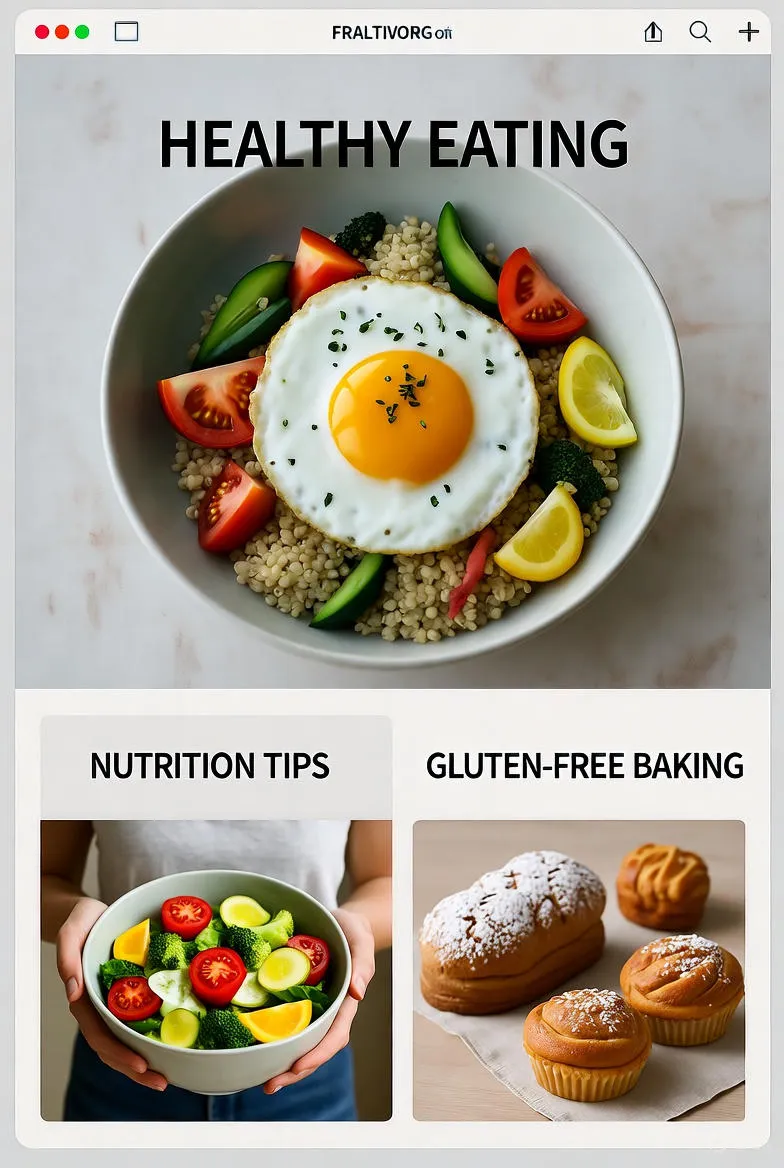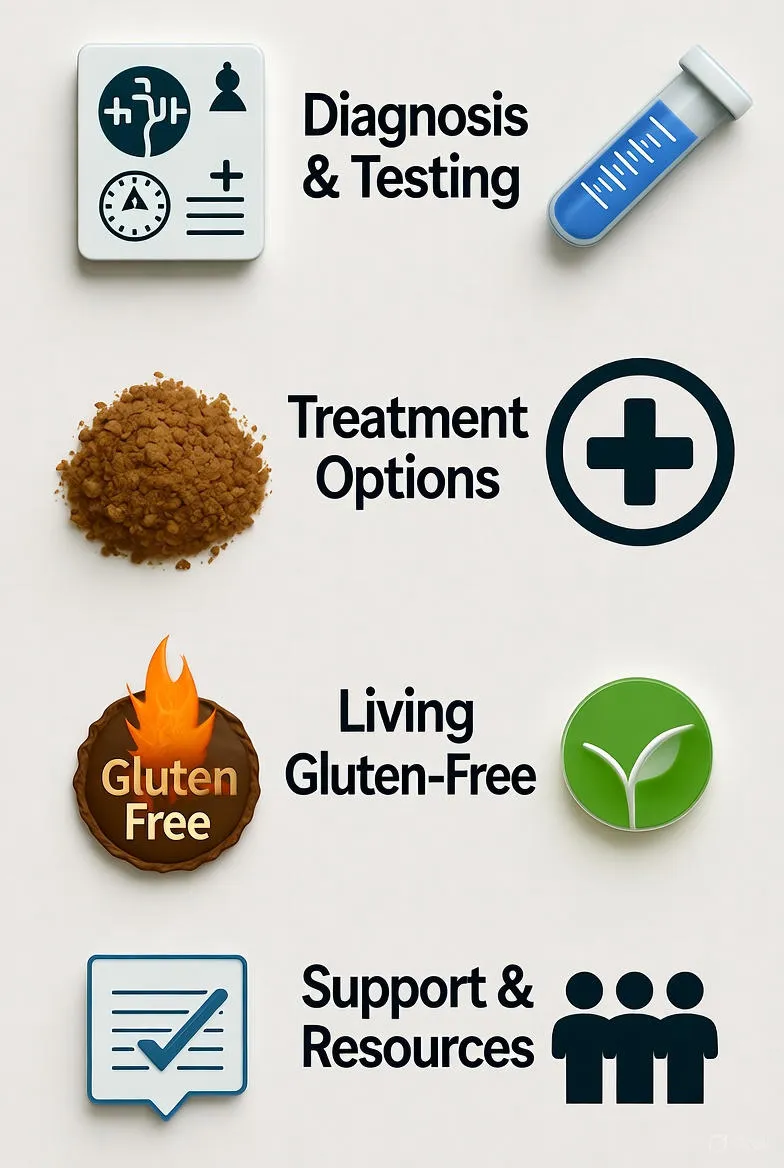How to Read Gluten Labels: A Complete Guide for Safe and Confident Shopping
Learn how to read gluten labels with confidence. This guide explains how to identify gluten ingredients, avoid hidden sources, understand certifications, and shop safely for a gluten-free lifestyle.

For individuals with celiac disease, gluten sensitivity, or those simply choosing to live a gluten-free lifestyle, learning how to read food labels is one of the most important skills. Gluten hides in unexpected places, and without knowing what to look for, it’s easy to accidentally consume it. This comprehensive guide will help you understand how to identify gluten on labels, recognize hidden sources, and shop with confidence.
Understanding What Gluten Is
Gluten is a protein found in grains such as wheat, barley, rye, and triticale (a wheat-rye hybrid). It’s what gives dough its elasticity and structure. While gluten itself is harmless for most people, for others, it triggers serious health reactions. People with celiac disease experience an immune response that damages their intestinal lining, while others with non-celiac gluten sensitivity may suffer from digestive issues, fatigue, and inflammation.
Why Reading Labels Matters
Even a tiny amount of gluten can cause symptoms or intestinal damage in sensitive individuals. Because gluten is often used as a stabilizer, thickener, or flavor enhancer, it can appear in sauces, soups, snacks, and even products you wouldn’t expect, such as medications or cosmetics. Therefore, mastering label reading is essential for staying safe and healthy.
Identifying Gluten-Containing Ingredients
When reading a label, always start by scanning the ingredient list. The following are the most common gluten-containing ingredients to avoid:
- Wheat – includes varieties like spelt, kamut, farro, semolina, and durum.
- Barley – often found in malt flavoring, malt vinegar, and beer.
- Rye – used in rye bread, rye beer, and some cereals.
- Triticale – a hybrid grain derived from wheat and rye.
In addition to these, you should also watch for derivatives such as malt extract, malt syrup, hydrolyzed wheat protein, and modified food starch (when made from wheat).
Understanding Label Terminology
1. Gluten-Free Label
In many countries, the term “gluten-free” is regulated. For instance, according to the U.S. FDA, a product labeled as gluten-free must contain less than 20 parts per million (ppm) of gluten. This threshold is considered safe for most people with celiac disease. Always look for official gluten-free certification logos, such as those from the Gluten-Free Certification Organization (GFCO) or the Celiac Support Association.
2. May Contain Statements
Some products may include statements like “May contain traces of wheat” or “Produced in a facility that also processes wheat.” These warnings indicate possible cross-contamination during manufacturing. Individuals with celiac disease should avoid such products, even if they don’t list gluten ingredients directly.
3. Hidden Sources of Gluten
Gluten can be present in ingredients that don’t explicitly mention wheat, barley, or rye. Common hidden sources include:
- Flavorings and seasonings (sometimes derived from barley malt)
- Modified food starch (if made from wheat)
- Soy sauce (traditional soy sauce contains wheat)
- Gravy mixes and soups
- Processed meats like sausages and deli slices
- Candy and snacks that use malt syrup
How to Read Allergen Statements
In the ingredient section, look for the allergen declaration line. Many countries require manufacturers to clearly state the presence of major allergens such as wheat. For example, you might see statements like:
- Contains: Wheat
- Contains: Wheat and Soy
- Allergen Information: Produced on equipment that also processes wheat.
These statements can help you quickly determine whether the product contains gluten or is at risk for contamination.
Certified Gluten-Free Labels
Look for third-party certifications to ensure product safety. Trusted certifications include:
- GFCO (Gluten-Free Certification Organization) – guarantees less than 10 ppm gluten.
- Celiac Support Association (CSA) – certifies products with less than 5 ppm gluten.
- Canadian Celiac Association – uses the Gluten-Free Certification Program (GFCP).
Products with these logos undergo rigorous testing and auditing, offering peace of mind for people who must strictly avoid gluten.
Cross-Contamination Risks
Even if a product is labeled gluten-free, contamination can occur during production. Always be aware of how food is processed and packaged. For example, oats are naturally gluten-free but are frequently contaminated with wheat during farming or transport. Choose certified gluten-free oats to ensure safety.
Tips for Safe Gluten-Free Shopping
- Stick to naturally gluten-free foods such as fruits, vegetables, meat, fish, rice, and legumes.
- Learn to recognize hidden gluten sources in additives, sauces, and flavorings.
- Buy certified gluten-free products whenever possible.
- Read every label, every time – manufacturers can change ingredients without notice.
- When in doubt, contact the manufacturer to confirm gluten-free status.
International Labeling Differences
Different countries have different labeling laws. In the European Union, for example, “gluten-free” means less than 20 ppm gluten, while “very low gluten” can contain up to 100 ppm. In Canada, labeling is similarly strict, and manufacturers must declare any gluten-containing ingredients clearly. Always familiarize yourself with the local regulations if you travel or purchase imported goods.
How to Handle Ambiguous Labels
Sometimes, labels can be confusing. Words like “starch,” “flavoring,” or “hydrolyzed protein” can raise concerns. If the source isn’t specified, it’s safest to assume it could contain gluten. Avoid vague terms unless the product is clearly marked gluten-free or confirmed by the manufacturer.
Conclusion: Confidence Through Knowledge
Reading gluten labels effectively takes time and practice, but it’s one of the most empowering steps you can take for your health. Once you know what to look for – from allergen statements and ingredient lists to certified gluten-free logos – grocery shopping becomes simpler and safer. Whether you’re newly diagnosed with celiac disease or supporting someone who is gluten-intolerant, developing this skill will help you make informed, confident, and healthy choices every day.
Final Thought
Always remember: staying gluten-free isn’t just about avoiding certain foods – it’s about understanding what’s in them. With awareness, vigilance, and reliable label-reading habits, you can live well, eat safely, and enjoy food without worry.


